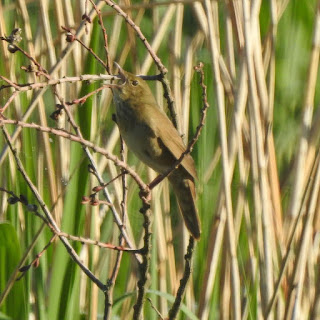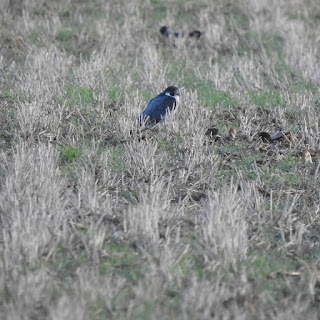Birdtrack sightings
2021 saw me reach my 50th birthday, I ended up seeing 255 species of bird and adding 19 lifers to my UK life list. Those numbers are even more remarkable given I'd decided to prioritise some other interests including my crown green bowling and race horse ownership.
Visiting Shetland in the Autumn and the Scillies in the summer were both long term bucket list destinations I acheived. Despite some amazing accommodation on Shetland I didn't really take to the place whilst Scilly in the summer was a delight.
In these uncertain Covid times you have to be grateful for your families, friends and your own good health.
Many thanks to Mrs D, the Captain & the Squire for sharing some of the experiences throughout the year.
Butterflies
Northern Brown Argus
Monarch
Mountain Ringlet
Chequered Skipper
I'm unsure how many species I saw during the season but I did complete the rest of the UK species. This includes Mount Ringlet, Northern Brown Argus & Chequered Skipper and in addition I saw a stunning Monarch on Shetland.
Salford Priors summary
The pits proved to be difficult with much reduced access and no management of the habitats. We recorded thirteen less species than in 2020 with the highlights limited to a male Little Bunting, Arctic Tern, Garganey, Goldeneye, Goshawk, Great White Egret, Kittiwake, Marsh Harrier, Merlin, Sandwich Tern, Turtle Dove, Russian White-fronted Geese & a Ringed-neck Parakeet was a first for the site. Many thanks to all those who contributed.
UK Life list
1) Bufflehead (West Midlands) February (Observed on Loughbrough University run)
2) Northern Mockingbird (Devon) March
3) American Herring Gull (Cornwall)
4) White-throated Sparrow (Sussex)
5) Whiskered Tern (Dorset)
6) Tawny Pipit (Dorset)
7) River Warbler (Somerset)
8) Roller (Suffolk)
9) Black-browed Albatross (Yorkshire)
10) Western Rufous Turtle Dove (East Riding of Yorkshire)
11) Western Sandpiper (Norfolk)
12) Wilson's Petrel (Isles of Scilly)
13) White-tailed Lapwing (Yorkshire) August
14) Green Warbler (Yorkshire)
15) Rose-breasted Grosbeak (Shetland)
16) Long-toed Stint (Yorkshire)
17) Western Subalpine Warber (Isles of Scilly)
18) Red-breasted Goose (Essex)
19) Belted Kingfisher (Lancashire) December
My birds of the year
My birds of the year are never decided on most rarest. If that was the case the Green Warbler, Belted Kingfisher and Long-toed Stint would head the top of charts. The Northern Mockingbird was very enjoyable as it was the first day out of the area after lockdown and we doubled it up with seeing the American Herring Gull. I like to assess the whole experience, views of the bird, journey, ease of experience & also habitat.
1) Northern Mockingbird (Devon) March - I didn't need any second invitation to take in the Exmouth Northern Mockingbird. It's never great birding in residential area's but I got very lucky with the birds showing amazingly well without any fuss or stress to the locals. What a bird! Loved it.
2) Roller (Suffolk) June - Whilst at least bi-annual, I've never had chance to see a Roller before. Previous sightings were either to far away or the bird never hung around. This beauty on the Norfolk/Suffolk border was a real beauty that hung around and entertained many hundreds of birders.
3) Belted Kingfisher (Lancashire) December- Winter birds account to a very small percentage of my lifers so to get a rarity such a Belted Kingfisher in the days before Christmas was quite unbelievable.
4) Black-browed Albatross (Yorkshire)- I was totally gripped last year when Albert the Albatross treated birders to amazing views last year. As soon as news broke of his return I was off to Yorkshire on one of many trips to Yorkshire in 2021.
5) Rose-breasted Grosbeak (Shetland)- The eastern winds never arrived for our trip to Shetland which was disappointing however we did have a great day twitching this Rose-coloured Grosbreak. The above image was taken on our second walk up a steep hill on Unst after our first views with only satisfactory. Any American bird in a calendar year is welcome but to finish with seven this year is amazing.
6) Long-toed Stint (Yorkshire)- Our departure from Shetland couldn't have been better timed for this super blocker. The Captain drove like Lewis Hamilton from Aberdeen for us to round off our holiday in great style.
7) Western Subalpine Warber (Isles of Scilly)- This twitch had everything. We were on the wrong island, took early boat, then pulled a favour with a lift to get to Telegraph where the bird was. As soon as we got out the mini bus we were greeted with negative news! Thankfully Adam convinced us to ignore the news & go through hedgerow with a fine toothed comb.
8) White-tailed Lapwing (Yorkshire)- We were greeted with negative news when we arrived on site after a 2 1/2 hour drive so we headed out on the reserve to enjoy the selection of waders available to view. And then like magic the graceful Lapwing flew in from our left and did a nice circle of the scrape before landing in front of us. Magical moments.......
9) River Warbler (Somerset)- Another species I could have only dreamt of seeing at the start of 2021. There is plenty of habitat on the Somerset levels so we were very lucky this bird took up teritory fairly close to a public footpath enabling birders to get some amazing views.
10) White-throated Sparrow (Sussex) - Sussex & Kent are counties I never enjoy driving to, however on this occasion I was spared the pain when the Captain drove me & the Squire to see this little beauty feeding under a picnic table on some allotments.
I'd like to wish all my blog readers a very happy New Year and very prosperous birdy 2022.















































